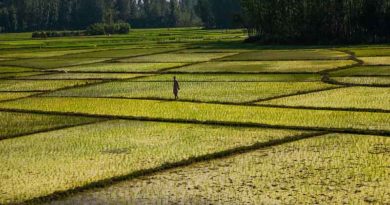Macro factors influencing the property market
13 September 2022, AU: Elders Head of Agribusiness Investment Services, Mark Barber, sat down to pen his thoughts on the many drivers of rural property prices ahead of the next edition of Elders Rural Property Update.
These are interesting times as we overlay inflation, war, sanctions, and ongoing (albeit easing) pandemic disruptions to try to figure out what the future holds. The big question from a rural property values perspective is, what will rising inflation and interest rates do to the rural property market in Australia?
Here is a collection of thoughts that might influence your view:
- In times like these, many view agriculture as an investment safe haven. Agricultural production is uncorrelated to most other assets classes, driven by the consistent requirement of a growing global population (particularly on Australia’s doorstep) to access food. Demand for food is inelastic. People can decide not to purchase the latest iPad or upgrade their car, however they will always need to eat.
- Recent equity market volatility has largely been driven by an inflationary environment and the steps central banks are taking to slow things down. For agriculture, historical data support the hypothesis that commodity prices generally rise during periods of inflation. Having said that, higher commodity prices and increased production will lead to increased global demand for farm inputs such as seeds, fertilizer, livestock, and so on, thereby putting upward pressure on input prices.
- Australian agricultural exports are arguably more important in the current global supply chain environment. More than a quarter of the world’s wheat exports come from Russia and the Ukraine. Demand for Australian grain has therefore never been higher.
- The collective balance sheet of Australia’s farmers has never looked better, with strong equity positions (driven by farmland value appreciation and debt reduction), good seasonal conditions, historically low debt servicing costs (even with recent interest rate rises) and strong commodity prices. These factors have also contributed to strengthening decisions to retain and operate by most owners, creating a liquidity squeeze that is further driving prices higher.
- Perhaps the most important long-term factor driving property prices is confidence in the continuation of strong market fundamentals for most Australian farmland outputs. Demand is strong for Australian grains, oilseeds, meat, dairy and fibre products, with experts, farmers and investors alike having strong confidence moving forward.

Our view is that increased interest rates coming off record lows will not materially impact farmland prices in the short to medium term. Australian commodity prices remain very high across almost all categories and seasonal forecasts suggest production will also be high. Conversely, farmland transaction volumes are historically low, with demand materially outweighing buying opportunities.
The scene is therefore set for ongoing land price appreciation, albeit at potentially subdue growth rates. The factors weighing against this are increasing interest rates and input cost inflation. Both are factors with the potential to cut into margins should commodity prices ease, or supply is reduced through the event of unfavourable seasonal conditions.
Also Read: Tractor sale in India lowest in two months; 32 percent down in August 2022
(For Latest Agriculture News & Updates, follow Krishak Jagat on Google News)















